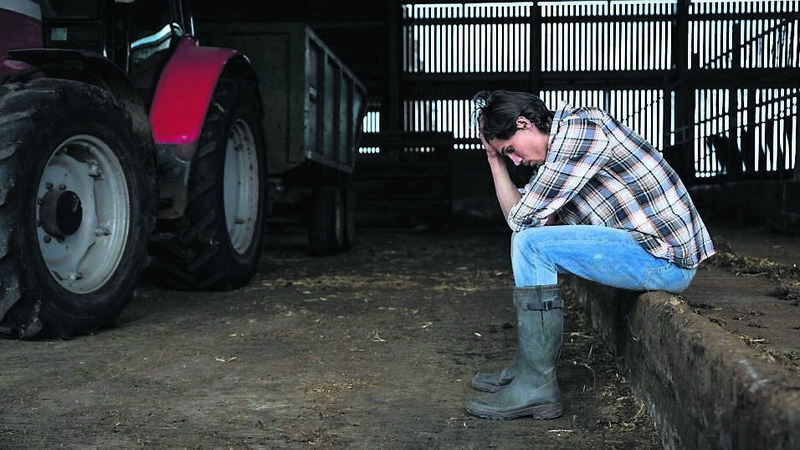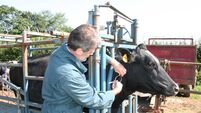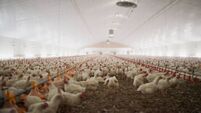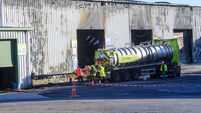Income crash hits social sustainability of Irish farms

The drop in income in 2023 challenged farm economic viability, causing significant increases in household vulnerability
The bad last full year for farm finances has had a knock-on effect on the social sustainability of Ireland's family farms, a report published this week has warned.
More than a fifth (22%) of dairy farm households fell into the vulnerable household category (economically non-viable farm business and no off-farm employment), according to the Teagasc 2023 Sustainability Report.
The report, which is based on detailed analysis of data collected through the Teagasc National Farm Survey, provides the latest available information on the sustainability performance of farms in Ireland.
It showed that across all sectors, the 10% most profitable farms were making just over €2,000/ha, compared to the bottom 10% at just over €600/ha last year.
The drop in income in 2023 challenged farm economic viability, causing significant increases in household vulnerability, which researchers defined as farms operating at income levels that would not be viable without off-farm employment across all sectors.
Metrics included the risk of isolation, agricultural education, hours worked on the farm, the need for off-farm work, and the age profile of the family unit.
Consistent with long-term trends, the most vulnerable households were beef farms, followed by sheep. The report found dairy farms tend to have a lower risk of isolation (living alone) compared to other farm systems. Fewer dairy farm households were likely to have a high age profile, where the farmer is over 60, with no household members aged under 45, than households in other farm systems.
Tillage farms also tend to outperform livestock farms in terms of these social sustainability metrics.
Conversely, dairy farming is typically labour-intensive. Results indicate that dairy farm operators work significantly more hours per year on the farm than the average operator in other systems.
Given the hours required on the farm, relatively few dairy farmers work off-farm. However, even accounting for time spent working off-farm (notably in drystock systems), dairy farm operators tend to work more hours overall than operators in other farm systems.
The number of hours worked off the farm had also increased over the last four years for both sheep and tillage enterprises bringing them into line with beef farms.
Presenting the results, Teagasc staff Trevor Donnellan and Cathal Buckley warned that farm sustainability is the intersection of economic, environmental, and social factors, as well as also innovation, and as a result, all four were crucial to the sustainability of the industry.
The Teasgasc 2023 Sustainability Report provides the latest available information on the sustainability performance of farms in Ireland, based on detailed analysis of data collected through the Teagasc National Farm Survey.
It shows that the 10% most profitable farms were making just over €2,000/ha, compared to the bottom 10% at just over €600/ha in 2023.
As has previously indicated in preliminary figures, all farm systems recorded their lowest average incomes in several years in 2023, a year marked by a sharp decline in milk and cereal prices, lower production volumes, and high input costs exacerbated by poor weather conditions.
For dairy and tillage farm incomes in 2023, it followed a year of record incomes in 2022. Livestock farms also saw a decline in income in 2023 due to high input prices and decreased output.
Economic viability (where family labour is remunerated at or above minimum wage, and sufficient income is generated to provide an additional five per cent return on non-land-based assets) was significantly challenged across all farm systems in 2023, with record lows recorded across dairy, sheep, and tillage farms.
The biggest win was in terms of environmental sustainability. Due to the intensity of production, absolute gaseous emissions (GHG and NH₃) on dairy farms remain significantly higher than on livestock and arable farms.
However, due to lower animal numbers and reduced fertilizer applications, absolute GHG emissions (per farm and per hectare) on dairy farms were lower in 2023 than in the previous two years.
Yet, due to reduced milk output following challenging market conditions, GHG and NH₃ emissions per kilogram of milk increased in 2023. Nitrogen (N) and phosphorus (P) balances per hectare also declined in 2023 compared to previous years.
On non-dairy systems, farm-level and per-hectare GHG & NH₃ emissions on cattle, sheep, and tillage farms rose slightly in 2023 compared to the previous year, due to slight increases in animal inventories and fertilizer applications (in sheep and tillage systems). Nitrogen balances on cattle and tillage farms remained relatively stable, while sheep farms showed slight increases.
The transition towards using LESS (Low Emission Slurry Spreading) equipment for slurry application also continued in 2023. In total, 81% of slurry on the average dairy farm and 38% on the average cattle farm was applied via LESS, with more slurry being spread in the early season.
The percentage of chemical nitrogen applied in the form of protected urea is growing on dairy farms, reaching 27%. This trend is also evident on cattle farms, though it remains relatively low in absolute terms (6%).









